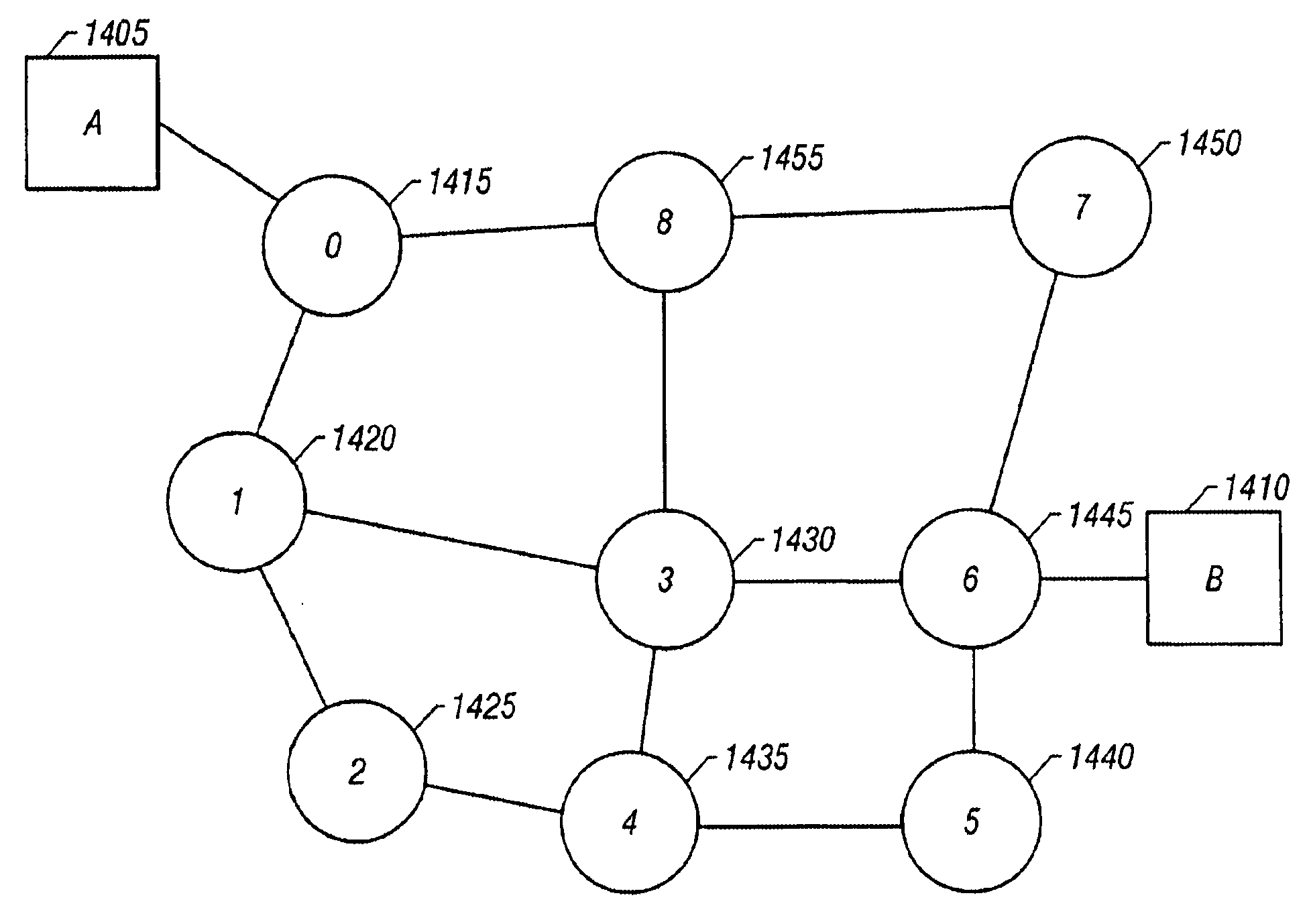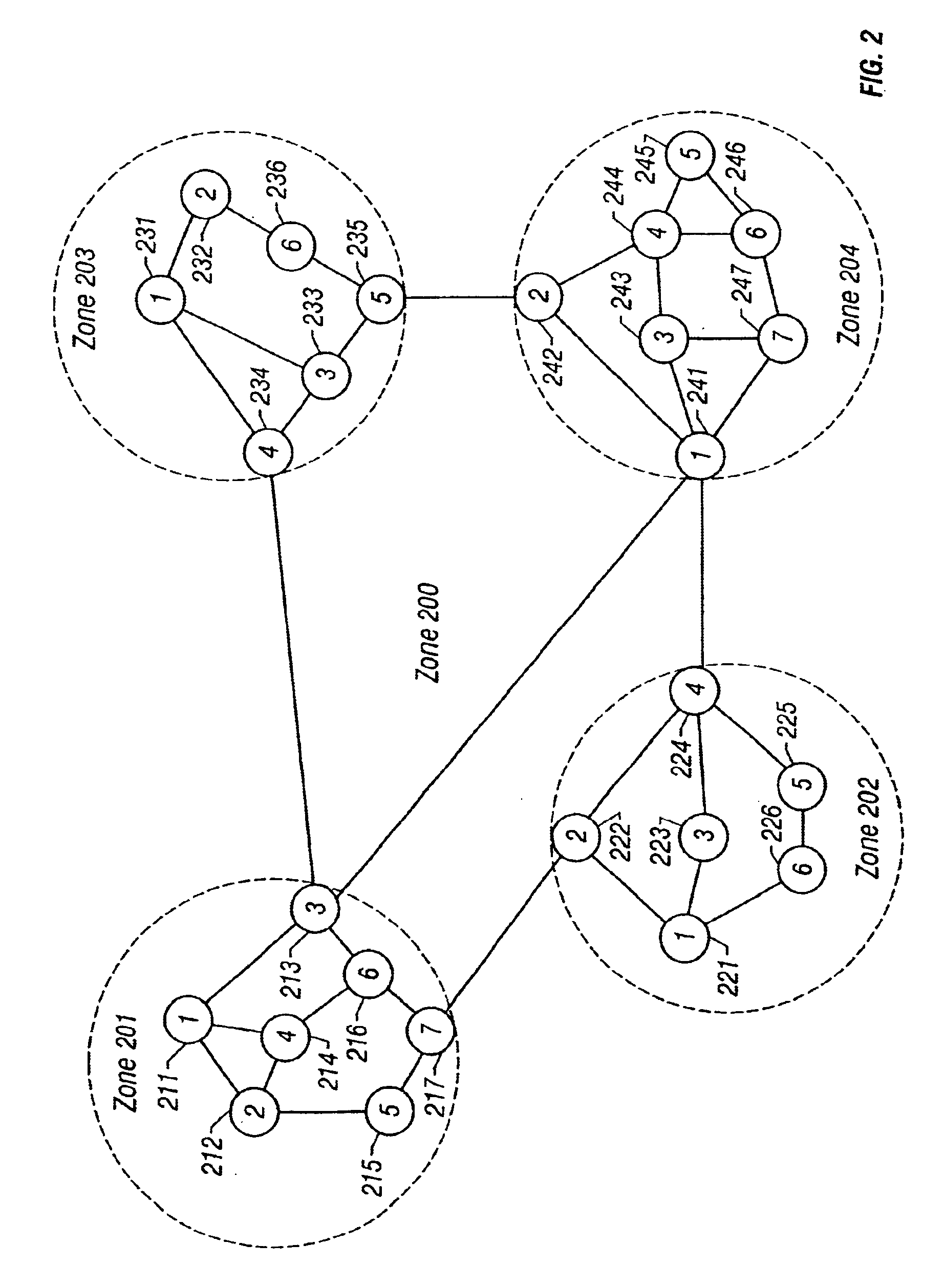Method for routing information over a network
a network and information technology, applied in the field of information networks, can solve the problems of inefficiency in capacity allocation, inability to scale well for large data networks, and most failures are transparent to the end user, so as to reduce excess bandwidth requirements, and reduce excess bandwidth
- Summary
- Abstract
- Description
- Claims
- Application Information
AI Technical Summary
Benefits of technology
Problems solved by technology
Method used
Image
Examples
Embodiment Construction
The following is intended to provide a detailed description of an example of the invention and should not be taken to be limiting of the invention itself. Rather, any number of variations may fall within the scope of the invention which is defined in the claims following the description.
In one embodiment, a routing protocol is described that provides many advantages, including restoration times on the order of 50 ms or less (e.g., comparable to those of SHRs) and relatively high utilization efficiency (e.g. by reducing the amount redundant bandwidth, preferably to, for example, 50% or less). The protocol achieves the former by using a physical network layer (e.g., SONET) for communications between network nodes. Preferably, no other protocols are interspersed between the routing protocol and the transmission medium. Also preferably, all protocol-related status and control messages are communicated in-band (e.g., carried by the physical network layer, for example, in certain of a SON...
PUM
 Login to View More
Login to View More Abstract
Description
Claims
Application Information
 Login to View More
Login to View More - R&D
- Intellectual Property
- Life Sciences
- Materials
- Tech Scout
- Unparalleled Data Quality
- Higher Quality Content
- 60% Fewer Hallucinations
Browse by: Latest US Patents, China's latest patents, Technical Efficacy Thesaurus, Application Domain, Technology Topic, Popular Technical Reports.
© 2025 PatSnap. All rights reserved.Legal|Privacy policy|Modern Slavery Act Transparency Statement|Sitemap|About US| Contact US: help@patsnap.com



